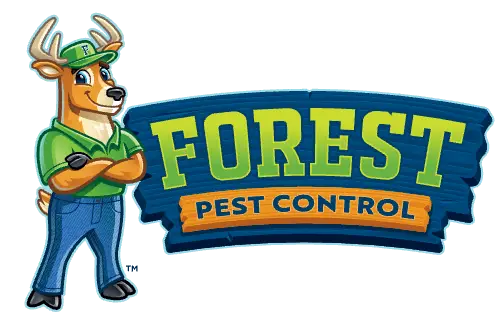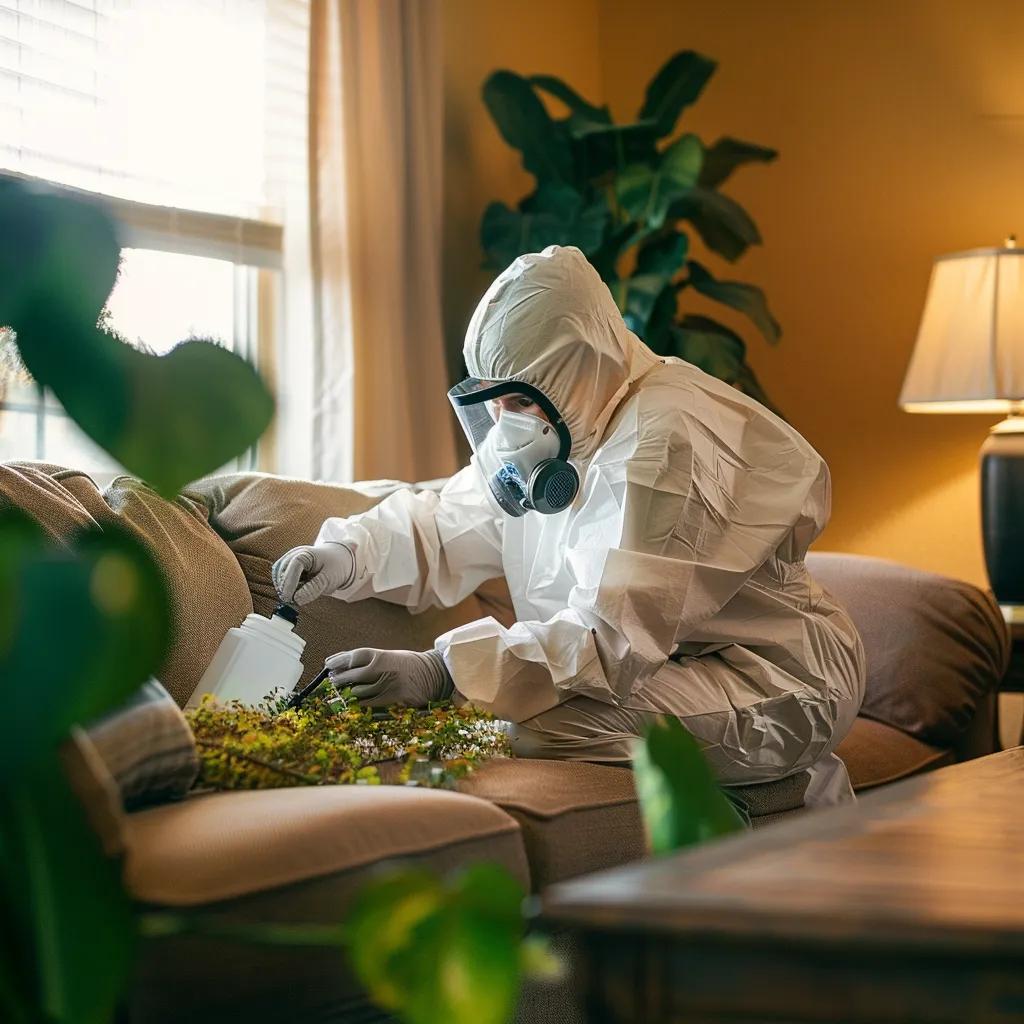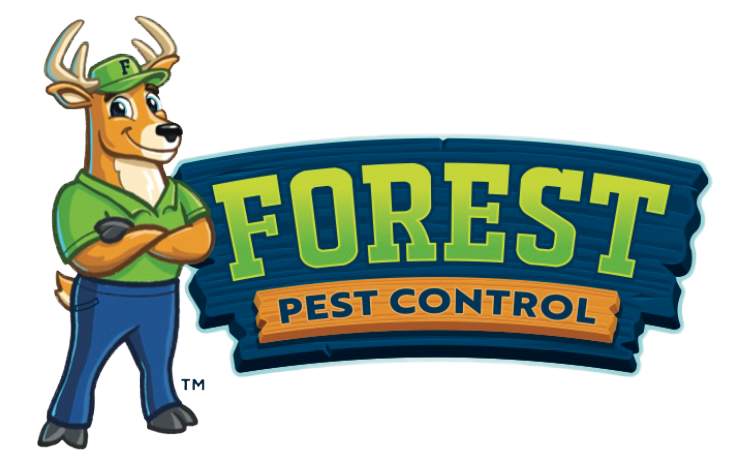10 Proven Pest Control Methods for Homes and Businesses: What Are the Most Effective Strategies?
Pests cost U.S. property owners over $5 billion in damage each year, so understanding what are the most effective pest control methods for residential homes and businesses is critical for health and asset protection. This guide examines ten proven strategies—from sustainable Integrated Pest Management to targeted chemical applications—tailored for Central Florida’s unique climate. Homeowners and business owners will learn inspection routines, exclusion tactics, physical and biological controls, and when to enlist professional services from Forest Pest Pros.
In the sections below, readers will discover:
- Core principles and local benefits of Integrated Pest Management (IPM)
- Exclusion and sanitation practices to seal out invaders
- Physical techniques like traps, baits, heat treatment, yard maintenance
- Safe, targeted chemical treatments and eco-friendly biological options
- The role of regular inspections, professional services, and cost factors
What Is Integrated Pest Management (IPM) and Why Is It Essential for Homes and Businesses?
Integrated Pest Management (IPM) is a sustainable strategy that integrates inspection, identification, threshold-based action, control tactics, and continuous evaluation to minimize chemical use while achieving long-term pest suppression. By coordinating physical barriers, targeted treatments, and environmental adjustments, IPM boosts protection and reduces collateral impact on people and pets.
Integrated Pest Management Benefits
Integrated Pest Management (IPM) is a sustainable approach that minimizes pesticide use while effectively controlling pests. IPM integrates various methods like physical barriers, targeted treatments, and environmental adjustments to protect homes and businesses. This approach reduces health and environmental risks associated with traditional pest control methods.
United States Environmental Protection Agency, Integrated Pest Management (2024)
This citation supports the article’s emphasis on IPM as a key strategy for effective and environmentally responsible pest control.
IPM’s five core principles create a feedback loop of prevention and control, delivering both environmental stewardship and effective pest eradication that fits residential and commercial needs.
What Are the Core Principles of Integrated Pest Management?
Inspection, identification, action thresholds, control methods, and evaluation form the IPM cycle that continuously refines pest strategies.
- Inspect structures and surrounding areas for early pest signals
- Identify species to select precise, minimal-impact treatments
- Set action thresholds to avoid unnecessary interventions
- Employ control tactics—physical, biological, chemical—only as needed
- Evaluate results and adjust plans for sustained success
Each principle interlocks: accurate identification informs control choices, and evaluation guides future inspections, forming a resilient defense against repeat infestations.
How Does IPM Benefit Residential and Commercial Properties in Central Florida?
IPM minimizes chemical exposure, conserves beneficial organisms, and adapts to Florida’s year-round pest pressures.
- Reduced pesticide applications lower health and environmental risks
- Customized timing addresses seasonal peaks in termites, mosquitoes, rodents
- Long-term monitoring prevents costly repeat treatments
By focusing on targeted interventions and habitat modification, IPM sustains comfort and compliance with commercial regulations, from restaurants to retail outlets.
How Does Forest Pest Pros Implement IPM for Effective Pest Control?
Forest Pest Pros offers tailored IPM plans that begin with a thorough survey of your property’s vulnerabilities. After pinpointing pests, technicians recommend physical barriers, strategic baits, and eco-friendly products only when necessary. Follow-up inspections ensure thresholds aren’t breached, and service frequency is fine-tuned to your site’s risk profile.
For guidance on selecting a company experienced in IPM, visit our Choosing The Right Pest Control Company page.
How Can Exclusion and Prevention Protect Your Property from Pests?
Exclusion and prevention are foundational physical controls that block pests before they invade, cutting reliance on reactive treatments. By sealing gaps and maintaining hygiene, buildings become inhospitable to insects and rodents, reducing infestation risk.
Exclusion and Sanitation for Pest Prevention
Exclusion and sanitation are foundational physical controls that prevent pests from invading properties. Sealing entry points and maintaining hygiene are critical practices. These methods reduce the reliance on reactive treatments by making buildings inhospitable to pests, thereby minimizing infestation risks.
National Pest Management Association, Pest Prevention Tips (2023)
This citation reinforces the importance of exclusion and sanitation practices, aligning with the article’s recommendations for proactive pest control measures.
What Are the Best Practices for Sealing Entry Points in Homes and Businesses?
Effective exclusion uses caulking, weatherstripping, and screening to block access.
- Seal cracks around windows, doors, pipes, and utility lines with exterior-grade caulk
- Install door sweeps and replace worn weatherstripping to eliminate gaps
- Fit mesh screens on vents, drains, and attic openings
Why Is Sanitation and Hygiene Critical for Pest Prevention?
Proper cleanliness removes food and water sources that attract pests.
- Store perishables in airtight containers and promptly clean spills
- Empty trash daily, maintain sealed bins, and clean dumpsters regularly
- Keep work areas, kitchens, and storage rooms free of clutter
How Does Moisture Control Help Reduce Pest Breeding Grounds?
Addressing leaks, humidity, and drainage cuts off vital water supplies for pests.
- Repair plumbing drips, roof leaks, and foundation cracks
- Use dehumidifiers in basements, crawl spaces, and storage closets
- Grade soil and install French drains to divert standing water away from structures
What Are the Most Effective Physical Pest Control Methods?
Physical control methods capture or kill pests without broad chemical use, providing immediate reductions in rodent, insect, and bed bug populations. These tactics complement IPM by offering targeted removal when thresholds are reached.
How Do Traps and Baits Work to Eliminate Rodents and Insects?
Traps and baits exploit pest behavior to deliver lethal doses or capture targets alive. Proper placement and selection maximize control.
Strategic deployment in high-activity zones and periodic rotation of bait types prevent bait shyness and ensure sustained elimination.
When and How Is Heat Treatment Used for Pest Eradication?
Heat treatment applies elevated temperatures to eradicate bed bugs at all life stages.
- Professional units raise room temperature above 135 °F for several hours
- Heat penetrates furniture, walls, and carpets where pests hide
- No chemical residues remain, and repeated treatments aren’t required
For expert heat eradication of bed bugs and follow-up inspections, see our Bed Bug Extermination Services page.
What Role Does Landscape and Yard Management Play in Pest Control?
Maintaining outdoor areas reduces pest habitats around structures.
- Trim shrubs and tree limbs to prevent roof and wall access
- Remove leaf litter, wood piles, and debris that harbor insects and rodents
- Ensure proper grading and drainage to avoid water pooling
When Should You Use Chemical Pest Control and How Is It Applied Safely?
Targeted chemical treatments remain essential for severe infestations, but safe application by licensed technicians limits risks and maximizes effectiveness.
What Types of Targeted Chemical Treatments Are Commonly Used?
Professional insecticides, larvicides, and fumigation address specific pest challenges with precision.
- Liquid residual sprays for cockroaches and ants
- Granular baits for subterranean termite bait stations
- Fumigation or tenting for extensive bed bug and termite eradication
Applications are selected based on pest biology and property features to reduce over-application and non-target exposure. For tailored cockroach solutions, visit our Cockroach Extermination Services page.
Why Is Professional Application Important for Chemical Pest Control?
Licensed technicians ensure chemicals are used responsibly, abiding by regulations and safety protocols.
- Accurate dosage and placement minimize environmental impact
- Proper personal protective equipment (PPE) protects occupants and applicators
- Guaranteed coverage and follow-up treatments maintain control over time
How Does Biological Pest Control Help Manage Pest Populations Naturally?
Biological control introduces living organisms to suppress pests without synthetic chemicals, aligning with eco-friendly and organic preferences.
What Are Natural Predators and Parasites Used in Biological Control?
Beneficial species target pests through predation or parasitism.
- Nematodes applied to soil attack root-feeding insects
- Predatory mites curb spider mite outbreaks in landscaped areas
- Bacillus thuringiensis (Bt) targets mosquito and flea larvae
How Can Biological Control Be Integrated with Other Pest Management Methods?
Combining biological agents with exclusion, traps, and targeted sprays enhances efficacy.
- Release predatory insects when initial population thresholds are detected
- Use biological larvicides in breeding sites alongside moisture control
- Monitor predator performance through regular inspections
Why Are Regular Inspections and Monitoring Crucial for Effective Pest Management?
Regular surveillance detects early signs of infestation before populations explode, allowing timely interventions that save time and money.
How Do Inspections Identify Pest Problems Early?
Visual assessments and monitoring devices reveal pest presence before visible damage occurs.
- Inspect attic, crawl spaces, and utility areas for droppings or nests
- Use sticky traps and pheromone lures to gauge insect activity
- Record findings in detailed service reports for trend analysis
Early detection curtails infestations at manageable levels, reducing the need for extensive treatments.
What Are Action Thresholds and How Do They Guide Pest Control Decisions?
Action thresholds define infestation levels that warrant control measures, balancing cost, safety, and necessity.
- Fruit flies in a warehouse may trigger sanitation and baiting after a count of five per trap per week
- Single termite sighting near foundations prompts full termite inspection and bait station installation
- Low mosquito counts call for source elimination, while high numbers justify larvicide application
Thresholds optimize resource use and prevent unnecessary chemical applications, keeping operations efficient.
When Should You Hire Professional Pest Control Services for Your Home or Business?
Complex or recurring infestations, health-threatening pests, and compliance requirements often exceed DIY capabilities.
What Are the Benefits of Using Expert Pest Control Professionals?
Professional services deliver expertise, specialized equipment, and service guarantees.
- Certified technicians bring entomological knowledge for precise identification
- Advanced application tools—thermal imaging, moisture meters, bait stations—ensure thorough coverage
- Service contracts often include warranties and follow-up visits to maintain control
These benefits translate into peace of mind, regulatory compliance, and long-term savings.
How Do Customized Pest Control Plans Address Unique Residential and Commercial Needs?
Tailored plans account for property design, pest history, and occupant sensitivities.
- Residential plans focus on family-safe products and seasonal checks
- Commercial programs integrate health-department standards and record-keeping
- Multi-location businesses receive coordinated service schedules for consistent protection
Forest Pest Pros engineers every plan to match your site’s specific risk profile and operational demands.
How Can You Choose the Right Pest Control Method for Your Central Florida Property?
Selecting the optimal tactics requires evaluating pest type, infestation severity, property use, and tolerance for interventions.
What Factors Should Homeowners Consider When Selecting Pest Control Methods?
Key considerations include:
- Pest identification and typical behavior in Florida’s climate
- Treatment safety around children, pets, and landscaping
- Budget constraints balanced against long-term protection needs
- Warranty terms, service frequency, and company credentials
Weighing these factors ensures choices align with household priorities and safety standards.
What Should Business Owners Know About Commercial Pest Prevention Strategies?
Commercial clients must navigate regulations, liability, and brand reputation concerns.
- Food establishments require HACCP-compatible approaches and documentation
- Corporate campuses may employ trap-and-monitor programs with digital reporting
- High-traffic venues benefit from integrated mosquito and termite monitoring systems
Professional partners help businesses maintain compliance and preserve customer trust.
What Are Common Signs of Pest Infestations in Central Florida Homes and Businesses?
Early recognition of pest indicators allows prompt action before damage escalates.
How to Identify Signs of Termite, Rodent, and Bed Bug Infestations?
Termites leave mud tunnels and hollow‐sounding wood, rodents gnaw surfaces and leave droppings, and bed bugs cause itchy bites and blood spots. Frequent nighttime checks and professional inspections confirm presence before visible damage advances.
When Is Pest Damage Severe Enough to Require Immediate Action?
Uncontrolled termite activity can undermine structural integrity, rodent burrowing may sever electrical wiring, and bed bug proliferation can disrupt occupancy. When property or health risks arise, rapid professional intervention prevents costly repairs and liability.
What Are Cost Considerations and How Do They Affect Pest Control Choices?
Understanding factors that influence pricing helps balance budgets with the need for effective solutions.
What Factors Influence the Cost of Residential and Commercial Pest Control?
Service cost depends on:
- Infestation severity and pest species complexity
- Treatment type: DIY sprays versus professional fumigation
- Property size, layout, and access challenges
- Frequency of visits and warranty terms
Seasonal surges in termite swarms or mosquito breeding may also affect availability and pricing.
How Does Investing in Professional Pest Control Save Money Long-Term?
Proactive, threshold-based interventions prevent major outbreaks that require extensive repairs and re-treatments. Guaranteed service plans reduce emergency call-outs, extend asset life, and support insurance compliance—transforming control costs into long-term savings.
Preventing and managing pests in Central Florida demands a multi-layered approach grounded in Integrated Pest Management, physical exclusion, targeted treatments, and expert oversight. Forest Pest Pros combines local insights, customized plans, and licensed applications to safeguard homes and businesses across Orange, Seminole, Lake, Volusia, and Osceola Counties. By integrating sustainable practices with advanced techniques, property owners gain lasting protection, reduced risks, and peace of mind. Contact Forest Pest Pros today to start your tailored pest control plan and secure your property against Florida’s toughest pests.






